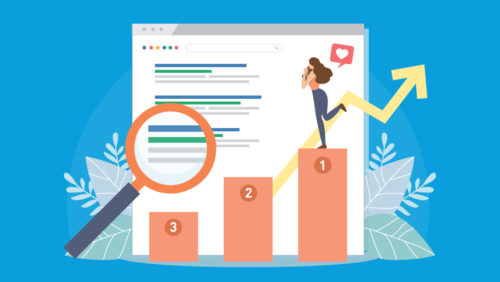
Website Servers – what are my hosting options and why are they important?
In basic terms, a web server is a computer system that runs a website. It stores all the files associated with the site, such as images, stylesheets and documents, and has software that controls how the files are distributed to your website visitors.
Posted on: May 23rd 2017 • Posted in: Marketing Tips, Website Design
When somebody views your site, their device requests the files, which the server then computes and sends back to them in the correct format.
Essentially, it’s your physical space on the internet.
What are the different types of server?
There are many different types of server available to you, depending on your needs. Our three most popular are listed below:
Shared web hosting – This is a single server which is shared by many different users. You’re allocated a certain amount of space on the server for your web files, and then share resources such as the processor (the ‘brains’ of the computer) and bandwidth (data transfer rate).
Thousands of websites can be hosted on the same server, making it a relatively cheap hosting solution, as maintenance fees are shared. With shared hosting, the hosting provider undertakes this necessary maintenance for you. It’s a relatively simple to use system, as you’re provided with a user-friendly control panel through which to upload your files and images; and crucially you can upgrade to a different server at any time.
There are disadvantages though. As resources are shared, you may find you sometimes have slow load times. If, for example, another site on the server is experiencing high levels of traffic, it may be using a high proportion of the available bandwidth, directly impacting your site’s performance. Conversely, there may be restrictions placed on your account if your site is using too many of the server’s resources.
There is also an increased chance that the server can crash, as thousands of websites are on the same machine. On the plus side, your provider should be on hand 24-7 to sort out the problem.
Virtual Private Server (VPS) – Like shared web hosting, a VPS is a dedicated server that has many different websites hosted on it, though less than on a shared server. The difference is that the server is segmented, so you are given your own virtual space, with your own allowance of memory (on a shared platform, these resources are shared disproportionally depending on what site utilises them first).
You’re also afforded greater control on a VPS. As you have access to the server’s root files, you can install scripts that may not have been allowed in a shared environment.
Due to the ‘private’ environment of a VPS, it is also more secure than a shared server, where a cyber-attack on one website may filter through to all sites on the server.
On the downside, a VPS is more expensive per month than a shared server, and may not be economically viable for a small website. It may also be harder for the hosting provider to maintain, as each site can install their own operating system and software.
Dedicated Server – A dedicated server is what is says, a server that is dedicated to you. All the resources on that server are devoted to your website, and not shared with anybody else.
Great for large sites that experience lots of traffic, dedicated servers provide you with complete control, allowing you to install all the software your business requires to run effectively. Security is increased as no third-party sites are hosted on the same server, as is site stability and reliability.
As you’re responsible for configuring your own software, you will require a great degree of technical knowledge however, and if the server does crash it can be complex to fix.
Can I not get web hosting for free?
In theory, yes you can opt for a free web hosting service. Obviously, there are cost benefits to this, but there are many, many more disadvantages. These include advertisements that are plastered across your pages, a generic domain name, limited bandwidth, and a lack of customer support.
For businesses, a free web hosting service is not a viable option.
Which server is right for me?
As you can see, our most popular services are either shared hosting or a VPS. A large business will require a dedicated server, but for most small-medium size companies, the first two options are more than sufficient.
You’ll know you need to upgrade from shared hosting to VPS when you’re regularly using up all your shared resources to the extent where your website performance is compromised; or you have a situation where you require more control.
We would recommend using a Virtual Private Server over shared hosting due to its increased user control and guaranteed memory allowance. As upgrading is a simple process though, owners of new websites may wish to use shared hosting as a starting point and then if their traffic should increase, consider moving to a VPS server as their business grows.
Based in Bury St Edmunds, our web developers are always on hand to help you with your web hosting queries, or to help solve any server issues that you may encounter. If you need us, don’t hesitate to get in contact on 01284 752266 or email [email protected].
Read more: ‘POP, IMAP and Exchange, what’s the difference?’ »
Read more: ‘Time to spring clean your website?’ »
If you enjoyed this post, please share it with your Facebook and Twitter followers using the links below!


